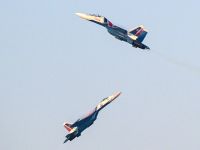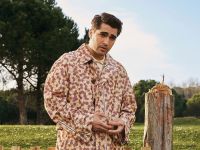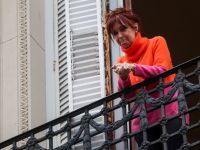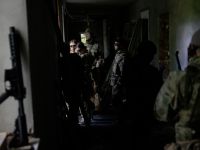Four AUB professors produce innovative research with applications that can impact the world
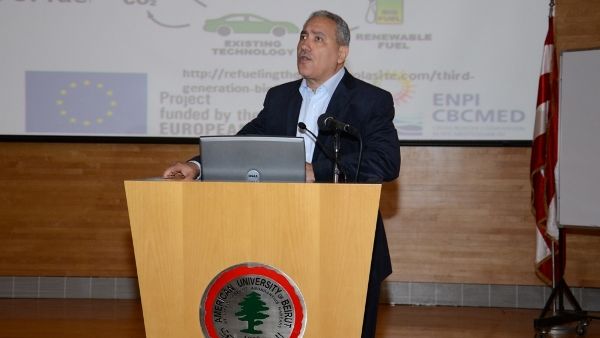
The Oxford English Dictionary defines the phrase “ivory tower,” a synonym for the academic workplace, as “a state of privileged seclusion or separation from the facts and practicalities of the real world.” This gives us an idea of what people often think about academics and their work. Many see them as reclusive figures engaged in intellectual exercises that, for the most part, yield nothing of practical significance in the “real world.” Yet while some may fit that stereotype, AUB’s faculty certainly does not.
To celebrate this fact, AUB showcased its faculty’s research applications at the fourth annual Kamal A. Shair Central Research Science Laboratory Conference, under the leadership of Dr. Youssef Mouneimne, on May 7, which was supported by USAID’s Partnerships for Enhanced Engagement in Research (PEER) program with real world applications. Speakers at the conference included AUB professors Yusuf Abou Jawdah (agriculture), Hiba El Hajj (internal medicine), Antoine Ghauch (chemistry) and Michel Kazan and Charbel Madi (physics), as well as representatives from the Lebanese and American governments.
The projects themselves span physics, biology, chemistry, and engineering, and impact the worlds of forensics, cancer, energy, and laser technology.
For instance, in the murky world of forensics, we have Professor Ghauch and his patent-pending Smart Counterfeiting Optical System (SACOS), a device that can consistently and accurately distinguish even the most sophisticated fraudulent currency from the real thing. The common practice right now involves bank tellers and customs agents shining UV light on sensitive documents or money to check for florescence. If it glows under the light, then they’ll assume it’s the real thing. But sophisticated fraudsters can now create documents using UV dyes similar enough to those used by currency and passport printers, meaning they can fool a customs agent holding a UV flashlight.
SACOS avoids florescence, looking instead at phosphorescence emissions, which are analyzed by a computer and are absolutely unique to specific printers. “Valuable papers, like passports and money, are usually made of cotton and cellulose, which is an ideal medium for visualizing phosphorescence at room temperature,” notes Ghauch. His machine can tell in five milliseconds whether notes are counterfeit. Ghauch has recently been approached by a European forensics lab interested in adopting the device.
Meanwhile, Kazan and Madi are developing a technology with the potential to dramatically reduce the cost of producing infrared lasers, which are used for medical applications like examining tumors. Currently, conventional lasers are made from crystal, which is expenysive.
Kazan and Madi have found a way to emit laser light using amorphous materials that don’t have the same rigid atomic structure as crystals. They did this using cones. “When a wave of light reaches the apex of a cone, it diffracts and leaves the surface as coherent light (light that doesn’t spread out, but focuses like a laser),” says Kazan, adding, “The material doesn’t matter, only the [cone-like] structure.” Using this technique, Kazan and Madi could create functional infrared lasers from cheap materials like glass.
On the medical side, Dr. Hiba El Hajj and her team at AUB have figured out a way to significantly prolong the lives of patients with two types of leukemia, acute myeloid leukemia (AML) and adult t-cell leukemia (ATL). “Leukemia is a poor prognosis disease,” says El Hajj. Once the disease appears, it is often too late. But El Hajj has found a way to significantly prolong the lives of patients of both diseases by treating them with a combination of arsenic and another agent: interferon in the case of ATL and retinoic acid in the case of AML.
“This treatment works to degrade the specific onco-protein in both types of leukemia that is responsible for transformation of normal cells into malignant ones,” explains El Hajj. The treatment protocol, already adopted by Iranian doctors and set to be adopted by others where leukemia is endemic, extends the lives of patients significantly. “There are patients still alive after five years, something not possible with any of the previous treatments,” El Hajj notes.
Meanwhile, in the world of green energy, Professor Abou Jawdah has identified several species of microalgae—unicellular organisms that can make oil from sunlight and CO2—native to Lebanon that show potential as super foods and fuel sources. The oil microalgae produces can be burned as a biodiesel fuel.
Though his research centers on turning microalgae into a biofuel, Abou Jawdah is quick to highlight its other potential uses, including as a protein supplement, medicinal agent, and cosmetic tool. Marketing microalgae outside the energy industry is essential to offsetting its high cultivation costs, since it does not yet break even as a biofuel. If cost and production efficiency barriers can be overcome, the algae could have an enormous potential impact on Lebanon’s energy sector.
Background Information
American University of Beirut
Founded in 1866, the American University of Beirut is a teaching-centered research university based on the American liberal arts model of higher education. AUB has over 9,000 students and over 1,200 instructional faculty members. The University encourages freedom of thought and expression and seeks to graduate men and women committed to creative and critical thinking, lifelong learning, personal integrity, civic responsibility, and leadership.


